Arborcoat
Posted by Sina Cyrus on 2020 Jul 3rd
It’s summer and it’s the best time to stain your decks, sidings and fences. Staining not only promotes the aesthetics but also protects your wood from extreme weathers of Canada and also prevents it from weathering and decaying. What follows is a brief introduction of Benjamin Moore exterior stain line called Arborcoat.
Arborcoat comes in four different opacities: Translucent, Semi-Transparent, Semi-Solid and Solid.
Translucent

Translucent stains come in 6 different tones which are called Natural, Redwood, Teak, Cedar, Mahogany and Silver Gray. Basically, translucents are very transparent stains that allows you to see wood grains very clearly and at the same time add a little bit of colour tone to the wood.
Bare in my mind that translucent stains are wood-type dependant meaning that the same stain may look different on different types of wood because the wood colour itself adds a tone to the stain you are using.
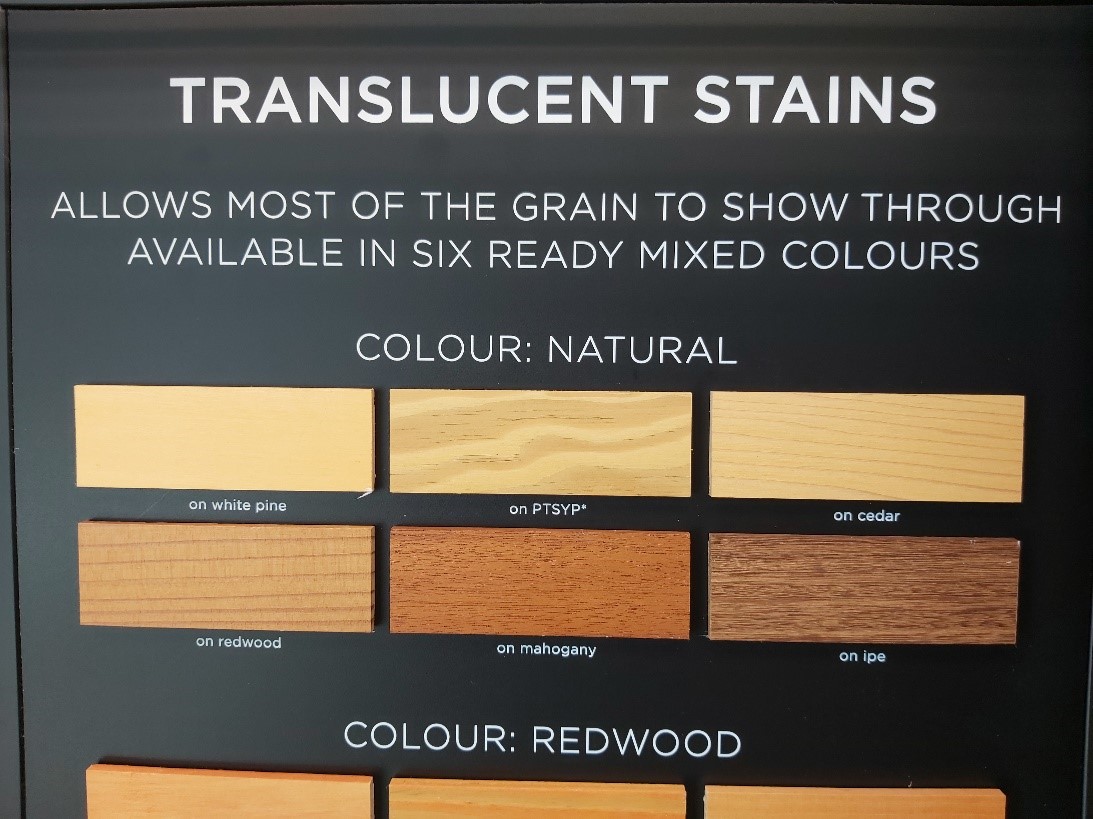
Colour: Natural on Different Wood Types
Semi-Transparent
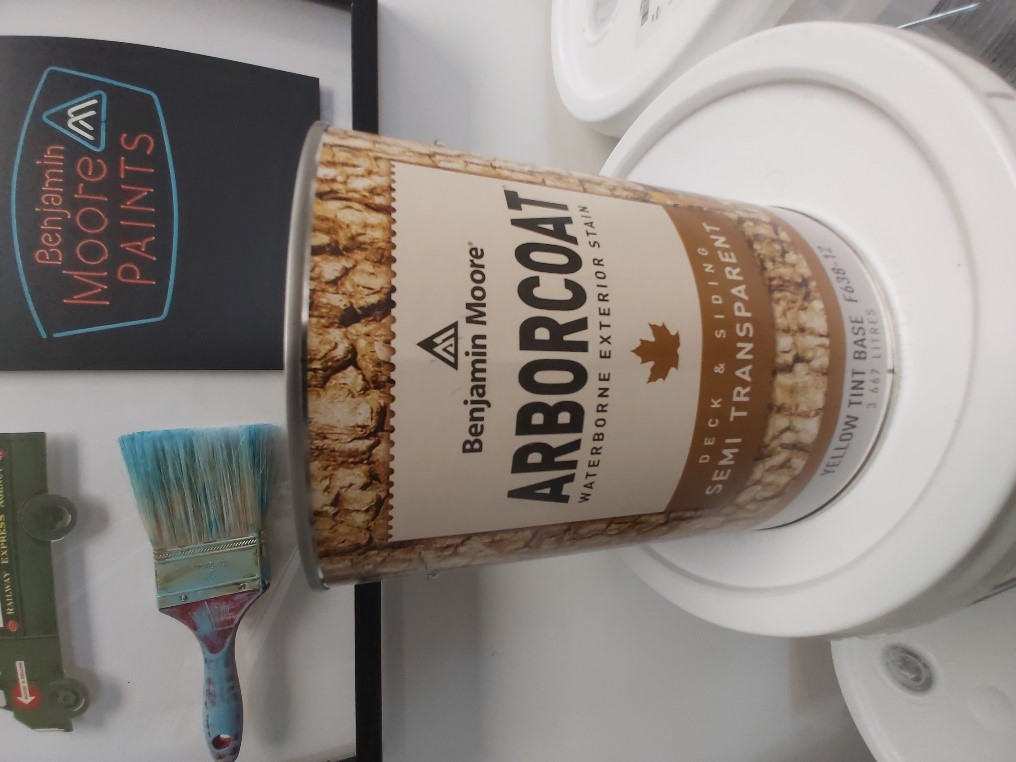
Semi-Transparent stains comes in 75 different colours. Semi-Transparents still show most of the wood grains but compared to translucents they have more colour to the substrate.
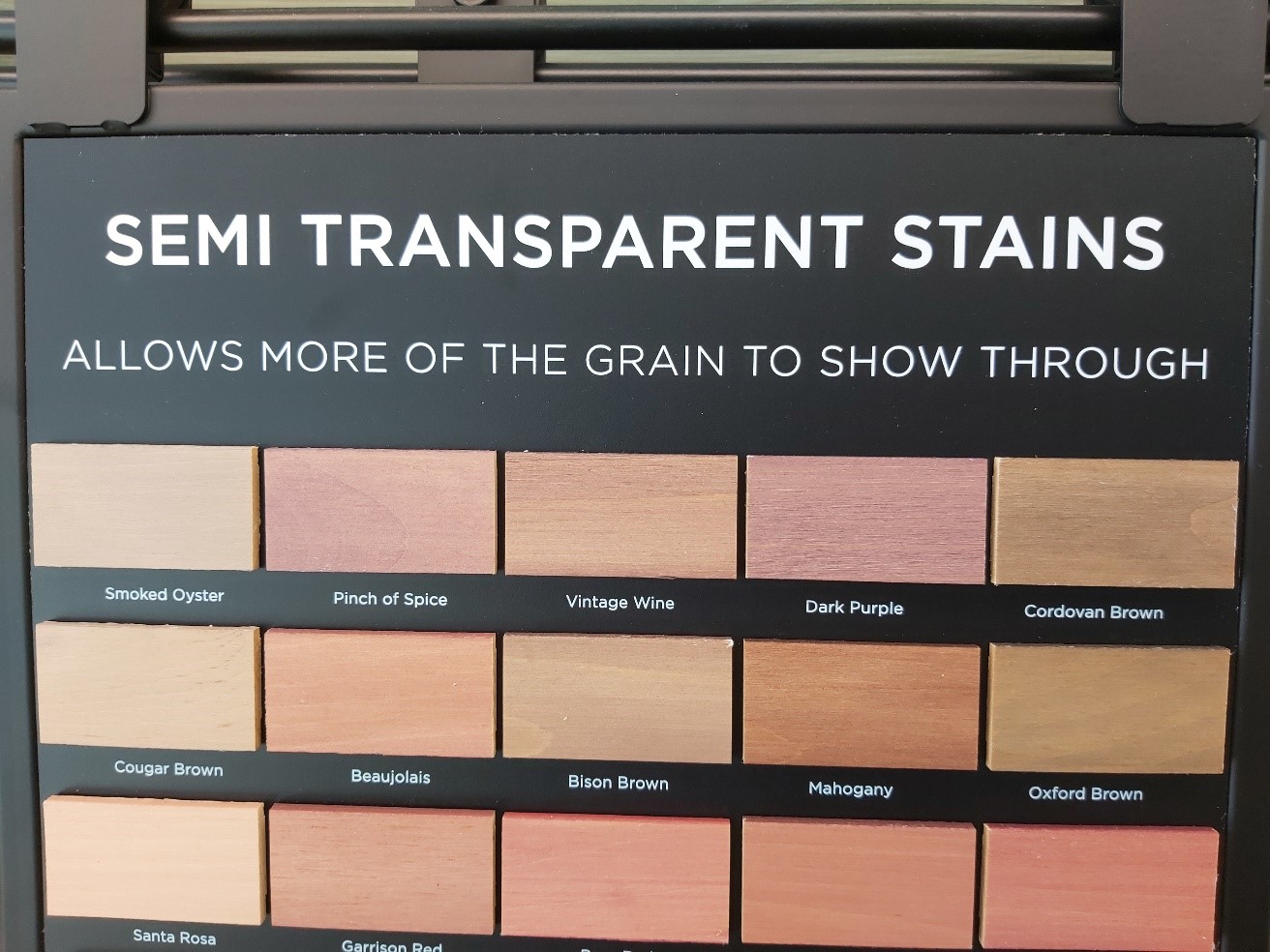
Examples of Semi-Transparent Stain Colours
Semi-Solid
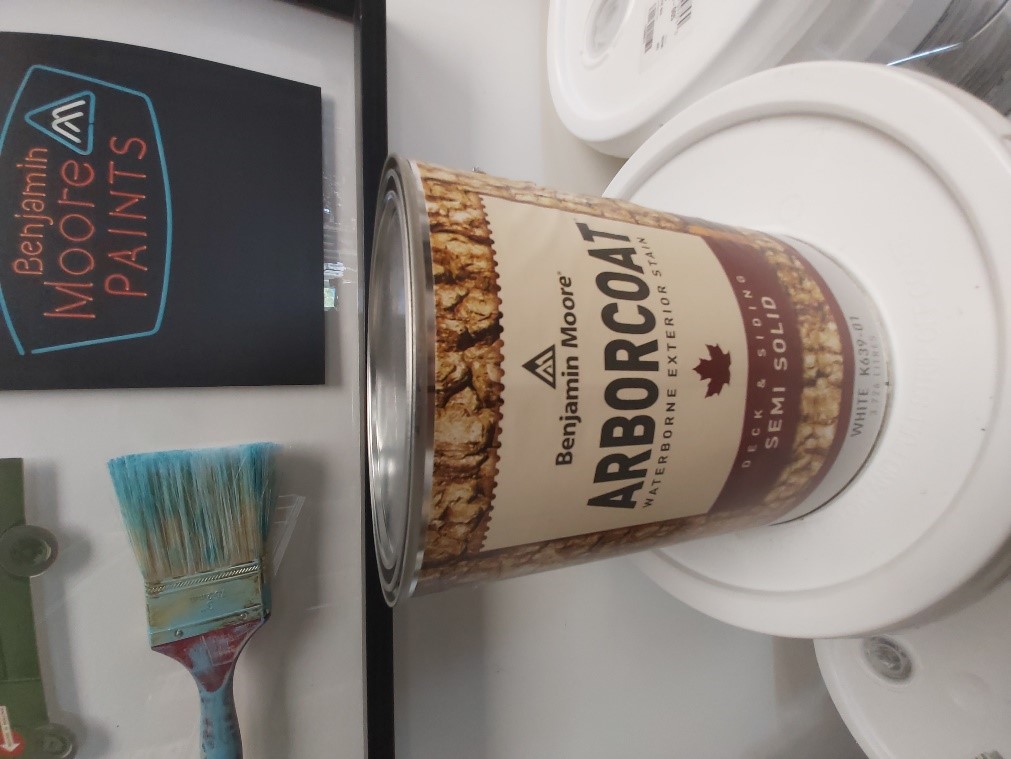
With the same 75 colour choices as Semi-Transparents, Semi-Solids is more opaque and reduces colour variations. So they cover the imperfections and form a thin barrier on top of your wood. Depending on the colour, wood grains are still slightly visible since they penetrate into the wood and wouldn’t sit on top like paints do.(Bare in mind, the darker the colour, the less wood grain will be visible.)
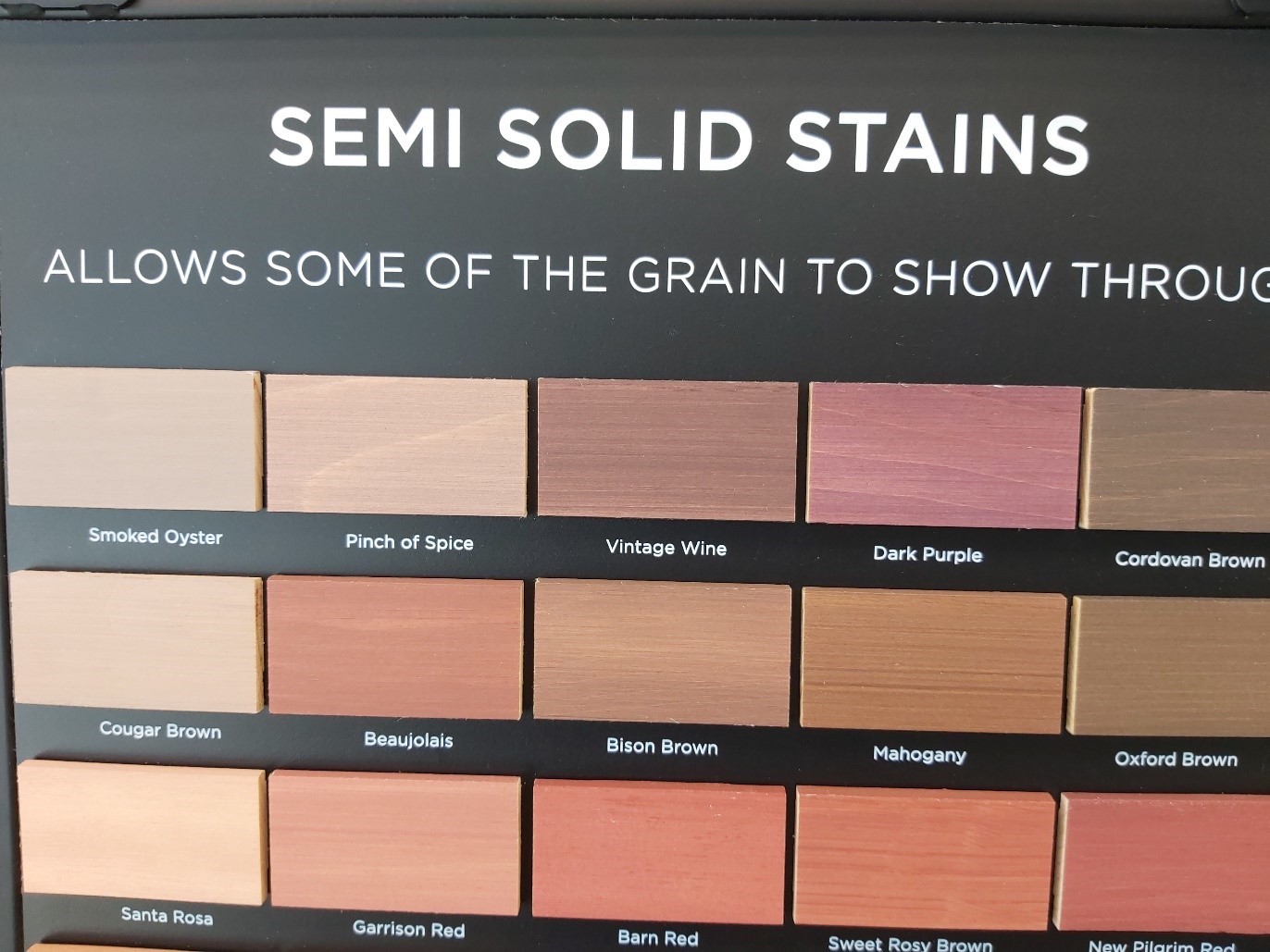
Examples of Semi-Solid Stain Colours
Solid

Solid stain's feels like paint but they penetrate rather than just sit on top of wood. It masks the grain of the wood without obscuring its texture. The high solid concentration and unlimited colours selections, this is our most popular stain choice.
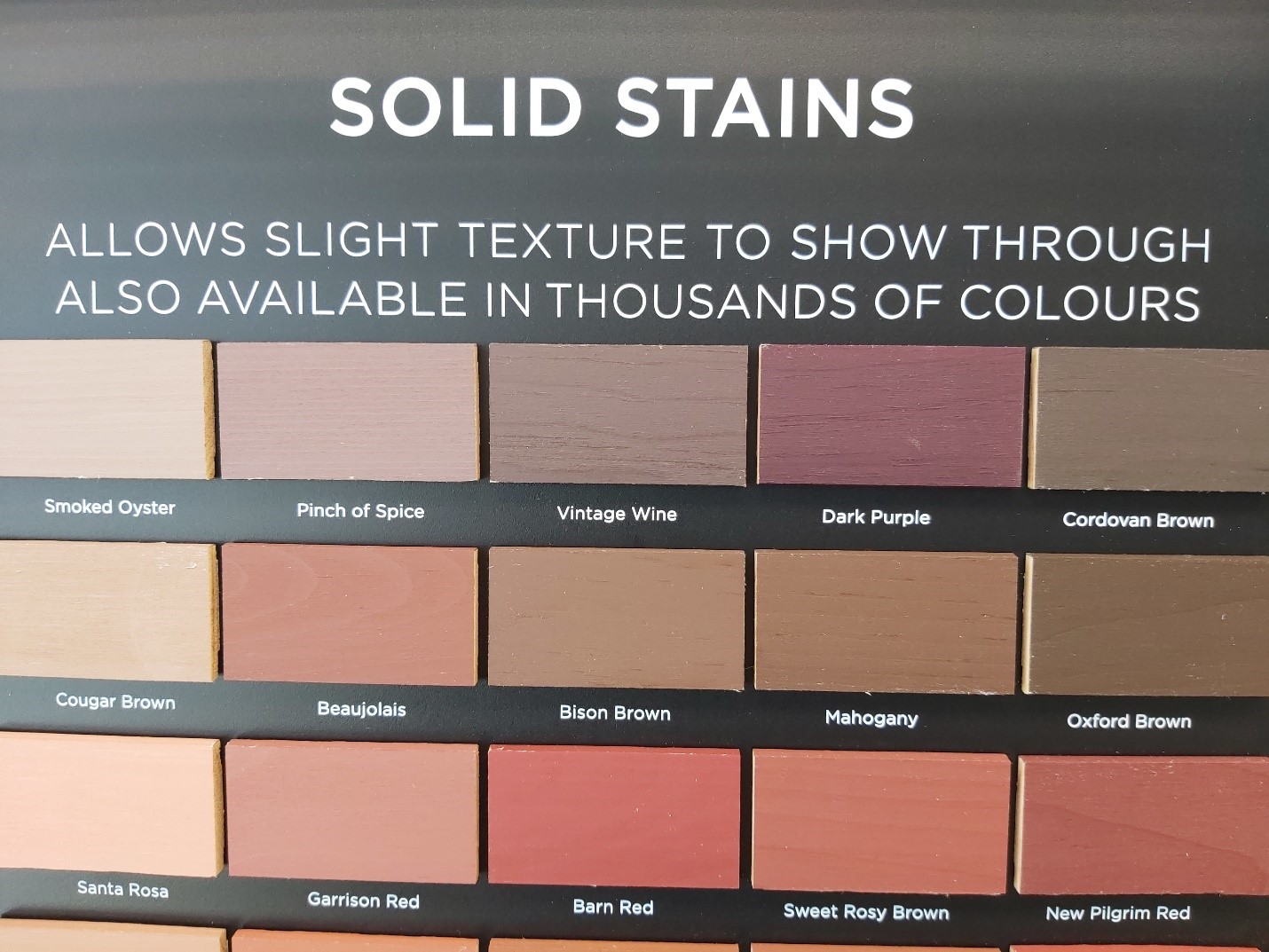
Examples of Solid Stain Colours
Preparation:
The key to a successful staining is preparation. Depending on the condition of your deck, you need to do certain steps to prepare it for stain. There are various products to help you with your task on the condition of your wood. Basically, there are three scenarios:
- New; In this case you need to use a product called Brighten to remove the mill glaze and open up the wood pores so the deck would be able to absorb the stain.
- Old, not stained; In this case you need to use a product called Restore to remove the dead wood grains from the surface and then you need to use Brighten to neutralize the wood and also to open up the pores for better stain absorption.
- Old and stained; In this case you need to remove the stain by using Remove, but if your wood is painted you need to physically remove it by scraping, sanding or pressure washing. Next, you need to neutralize the surface and open up the pores with Brighten and lastly, you can stain your wooden deck or fence.
Friendly Tips:
- Regardless of which scenario and steps, prior to staining, it’s best practice to sand the wood surface to help open the wood fibres so stains will penetrate deep into the wood.
- It’s important to keep an eye on the weather. Weather needs to be warm and it should not be raining from 48 hours before to 48 hours after staining. If there are still moistures in the wood, it will eventually push the stain out of the wood to make it “crack.”
- Translucent, Semi-Transparent and Semi-Solid stains also come is oil-based versions which are more durable, but the trade off is that they are harder to work with since they take a lot longer to dry and have bad odor.
- There are different factors at play for obtaining a good stained deck or fence. Call, email or visit our stores to get consultation.
- You can purchase stain and preparation products online by clicking here.
